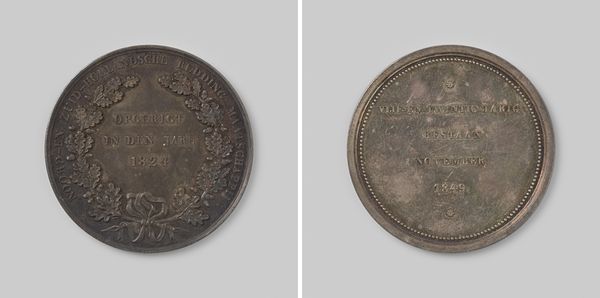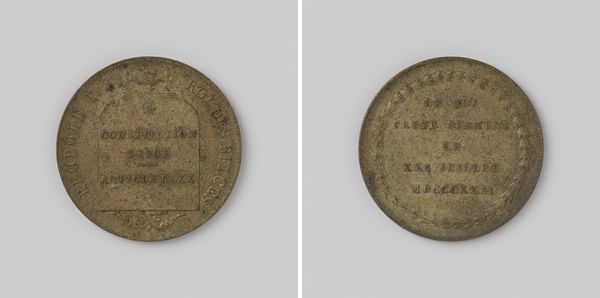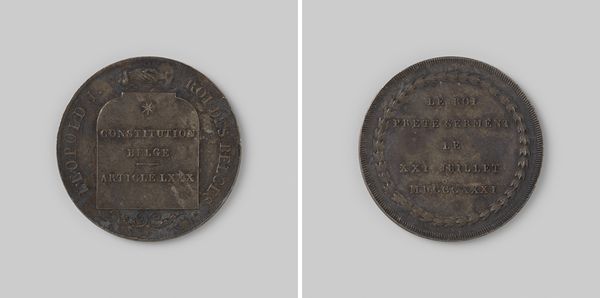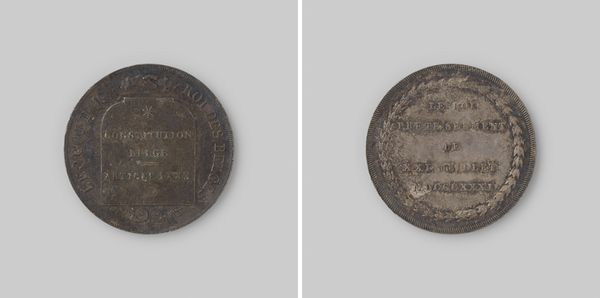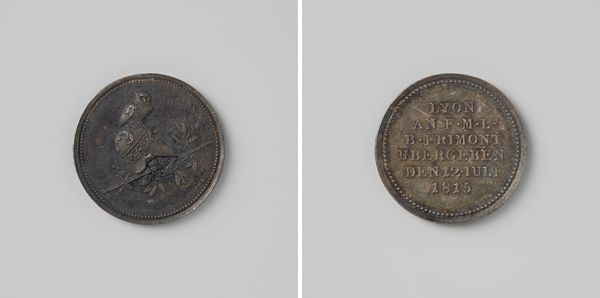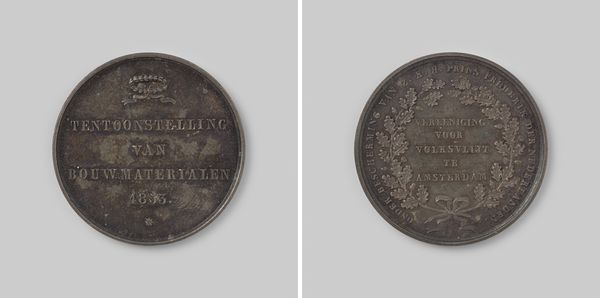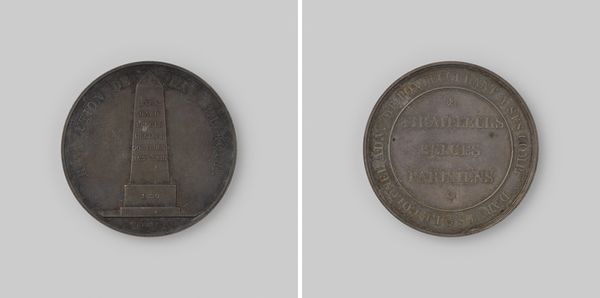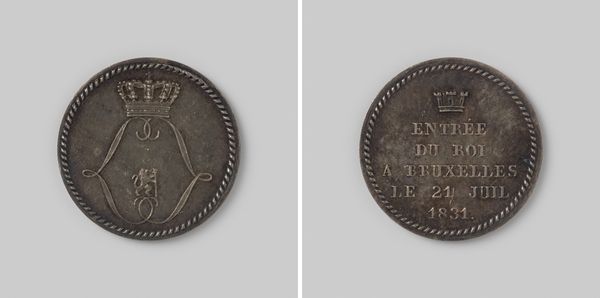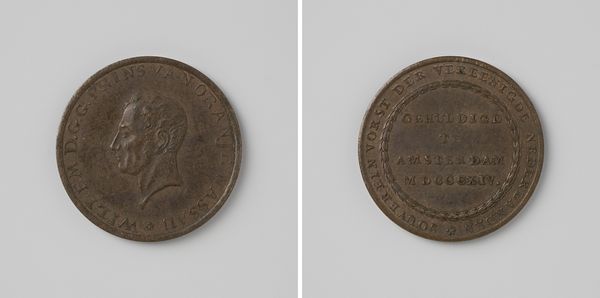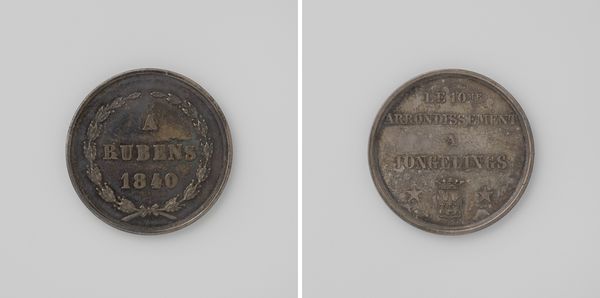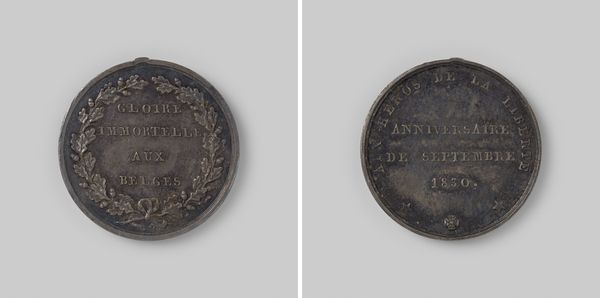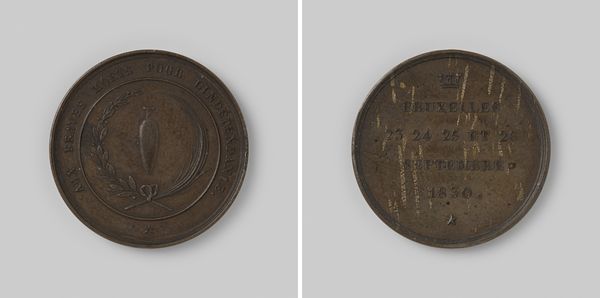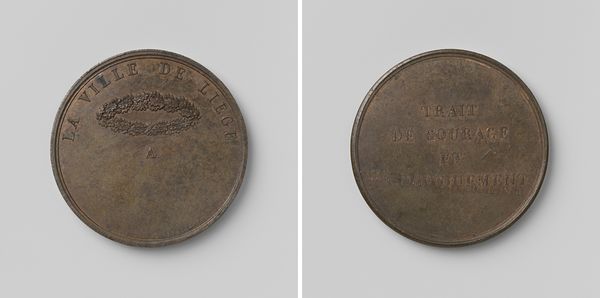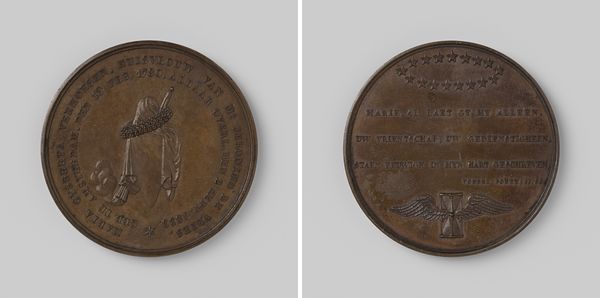
Afdeling Dordrecht van de Vereeniging ter bevordering van Fabrijk- en Handwerksnijverheid 1855
0:00
0:00
print, metal, bronze
#
medal
# print
#
metal
#
bronze
#
decorative-art
Dimensions: diameter 3.7 cm, weight 24.91 gr
Copyright: Rijks Museum: Open Domain
Curator: Here we have an interesting bronze medal. The inscription identifies it as "Afdeling Dordrecht van de Vereeniging ter bevordering van Fabrijk- en Handwerksnijverheid," or "Dordrecht Department of the Association for the Promotion of Factories and Crafts," created in 1855. Editor: My immediate reaction is one of simple, sturdy order. The circular form, repeated inscriptions... It's balanced, self-contained, almost like a microcosm of structured industry. Curator: Precisely. These types of medals were awarded to promote excellence in trades, and to connect the work being done with local civic pride. Dordrecht was an important center. Medals like these reinforced a culture of labor. Editor: I am drawn to the lettering, to the fonts. Each letterform is distinctly crafted and precisely arranged in concentric rings. Even the seemingly utilitarian typeface exudes craftsmanship, an artisanal approach even in mass-produced communication. It makes you consider the role of text in visual language. Curator: Indeed. The medal operates almost like a miniature billboard, imbuing the very act of industry and labor with worth and significance. Each medal functions as a tiny, portable archive, holding within it cultural memory of productivity. Editor: Yes, and visually, it functions via repetition. The repeated inscription encircling the central text on the front gives it an aura. One almost senses the cultural authority, perhaps even seeing echoes of halos surrounding devotional icons. The symbolic value accrues through such carefully implemented design choices. Curator: That's an intriguing point about the implied religious overtones of the design, unintentional as it may have been. This certainly reveals the almost moralistic conviction around hard work that permeated the mid-19th century. What we may read as austere simplicity now, was actually communicating volumes about social values at the time. Editor: Agreed. Its starkness invites that deeper examination. We look for detail within its formal constraints. This little artifact opens a wide window onto understanding the industrial-era culture of productivity. Curator: I see it similarly—the symbolism baked into what appears as simply “decoration,” reminds us that even mundane objects have much to communicate about belief. Editor: Indeed. A study of semiotics, in an object.
Comments
No comments
Be the first to comment and join the conversation on the ultimate creative platform.
